How to Get Toddler to Poop in Potty Again
Help! My Toddler Won't Poop in the Potty
Let's talk about poop.
I can't believe we're talking about this. The things we talk about as parents, right?
How do you deal with your child resisting pooping in the potty, saving their poop for nap time, for when you put on the pull-up, and they're like, "Okay, I feel comfortable now. I'm just going to poop in here"?
The common reasons for holding poop are constipation, fear and anxiety, or a need for more control.
There are other reasons, but these are the common ones when you start thinking about why your child won't poop in the potty.
Your toddler may not be pooping because they're constipated.
If they are struggling to poop and going poop is painful and unpleasant, that can cause poop resistance. So you're going to need to rule out if your child is constipated.
You want to make sure their poop is the consistency of toothpaste, and they're having regular bowel movements. If they're not, then work on relieving their constipation first.
Your toddler may not be pooping in the potty because they're scared.
If you suspect that they're holding their poop out of fear, you're going to want to work on their anxiety around poop.
Think about it from their perspective – it can be scary for your child in your child's mind to eliminate because they view poop as an extension of themselves. "This was in my body and now I'm losing it and it's coming out."
Imagine how lighter you feel once you poop. Now imagine for a little one in a little body how scary that can feel, to feel like they're losing parts of themselves.
T o help relieve anxiety about pooping is to make sure that you're reading books on anatomy.
You want to teach them the process of how we drink and eat goes through our bodies, and then comes out through our poop and pee.
That's a healthy process that our body does to eliminate waste. You want to keep reinforcing the idea that this is healthy. This means our body works well. This is a good thing, while you also acknowledge that, yes, this can feel a little scary.
You can also role-play using the potty with their doll, stuffed animal, or action figure.
Roleplay the doll experiencing some fear about pooping, feeling unsure about it, but ultimately he or she decides to do a brave thing and try it. Then you can have the little raisin or chocolate chip pop out – just to make this playful and silly, but also relatable.
You want to role-play similar situations that are happening in the bathroom through play because play is the best way children learn. It's distanced from them. It's not directly related to them. It's related to their doll or their action figure, so it provides a safe opportunity to learn and explore their feelings and body.
Make sure to watch your language about poop
Be careful not to say, "Eww, stinky poop. Eww, that's so nasty. Yuck!" You don't want to draw any negative vibes towards the pooping process.
You want to reinforce all the time how natural and healthy this is.
If you want, you can invite them to go potty with you.
You can say to them, "Okay, I have the potty feeling. I'm going to go pee on the potty, or I'm going to go poop on the potty. Oh, that feels so much better. Oh, my stomach feels better. My body feels better. I just let it slide out. I just let it go and I feel better."
You want to use language that reinforces that idea – that it's natural and it just slides out. "I'm just going to let it slide out. I'm going to relax my body and let it slide out."
You can use that same language with them as well.
But whatever you choose to use, you want to reinforce pooping with all that positive language and all that role modeling you're doing.
Your toddler may need more privacy to poop in the potty.
The first thing is to take inventory of how much privacy you're giving your child during their potty training journey. Try to give them more privacy if you haven't been – especially if you suspect that they have to go poop.
Your toddler is used to a lot of privacy with their diaper. There's built-in privacy there, but when they're on the potty, they tend to feel more exposed.
And you probably tend to be right there hovering over them.
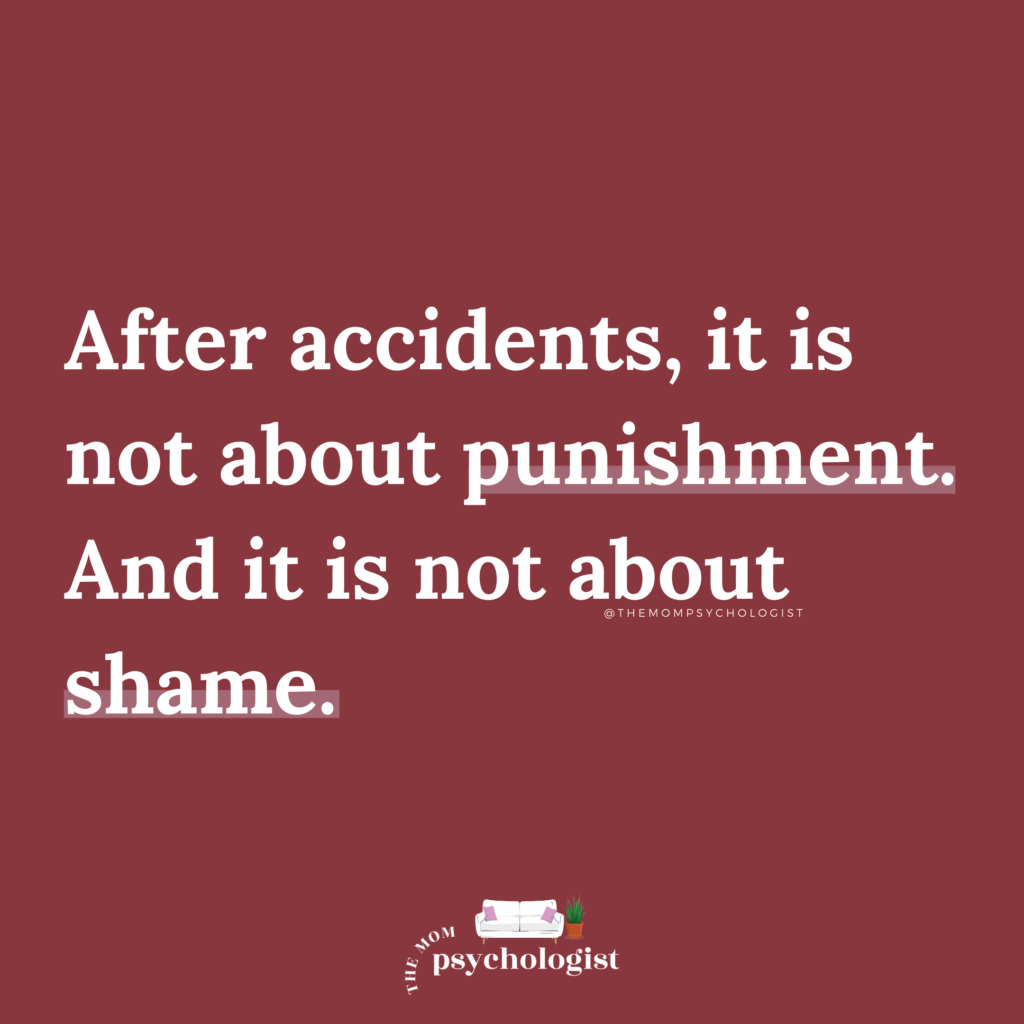
If they end up pooping in their pull-up – which they should only wear at nap and sleep time during potty training – or if they have an accident in their underwear, you want to further reinforce the notion that poop and pee go in the potty by flushing it in the toilet. You can take what's in their diaper and invite them to come with you and flush the poop down the toilet.
After accidents, it is not about punishment. And it is not about shame.
You want to continue to reinforce the idea over and over again where the poop and pee go.
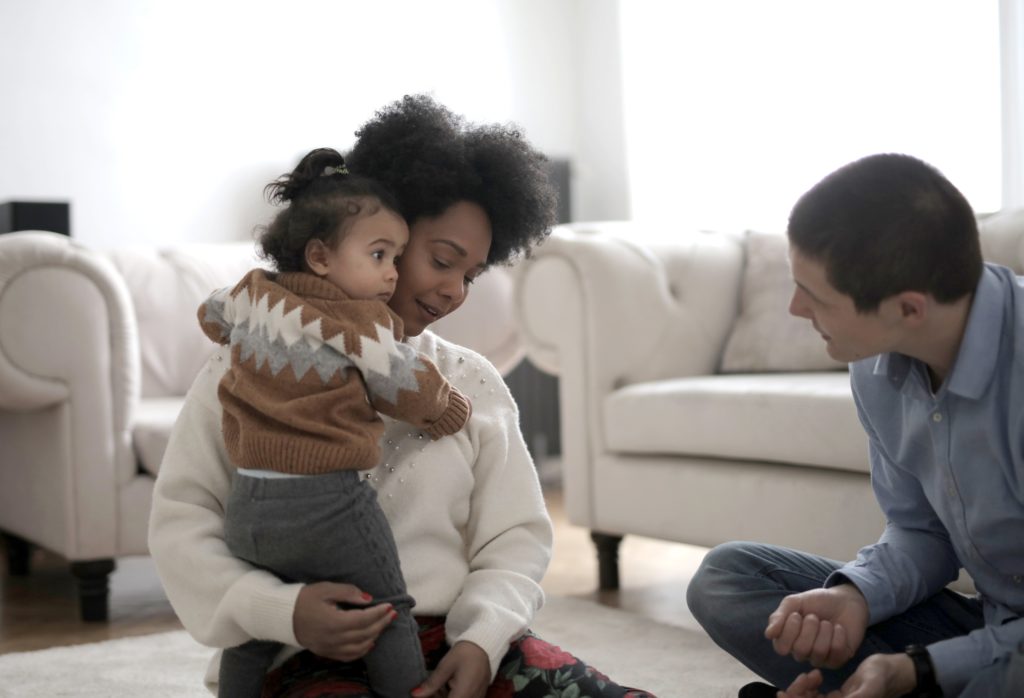
Your toddler may need more control over the potty training process to poop in the potty.
If you suspect poop resistance is more closely related to their need for control over potty training, then that is your cue to back up.
You want to back up if they are showing you signs of resistance. You never want to force them to sit on the potty for longer amounts of time than they want to.
Of course, you can say, "Hey, it's time to try to go potty and sit down." Then the minute they pop back up, that's fine. You just praise: "Okay, thanks for trying. We'll try again soon."
You never want to create any anxiety, any resistance around potty training by forcing them on the potty. That's super important because they'll grow to hate the potty.
What's important about this process is to release your emotional investment.
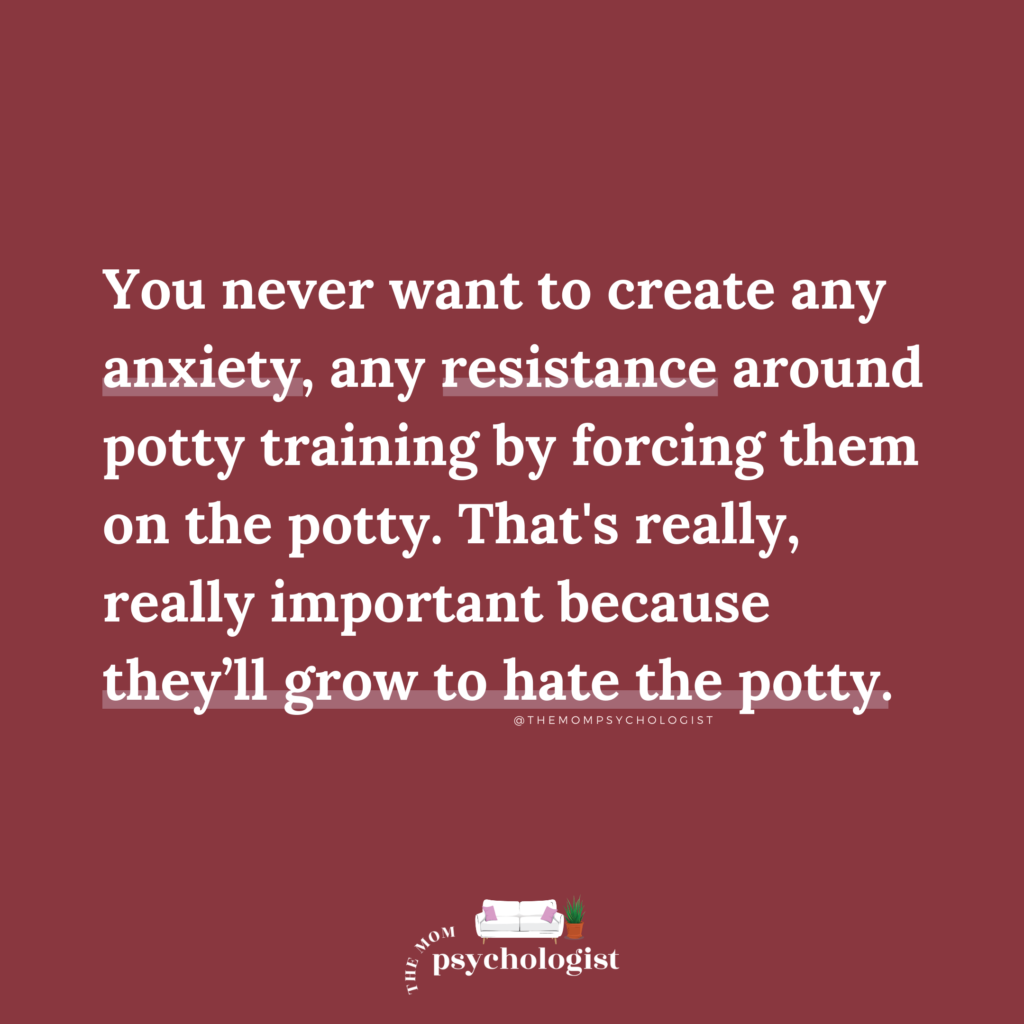
If you get too emotionally invested in it, your kiddo can sense it. When you try too hard to make this happen, they are going to resist.
Again, children have a healthy need for control, especially toddlers and preschoolers. This is their time to be autonomous, to be independent. If they sense that you're too wrapped up in it, then they are going to naturally resist us. So again, that's your cue to drawback.
Try using a lot of when/then statements. "When you go potty or when you sit on the potty, then we go have a snack. Then we go play. Then we go outside."
You want to use those when/then statements to set that parameter, set that expectation, and then you fall back. You let them do it when they're ready because again, you can't force this onto them, or else you will make this even worse.
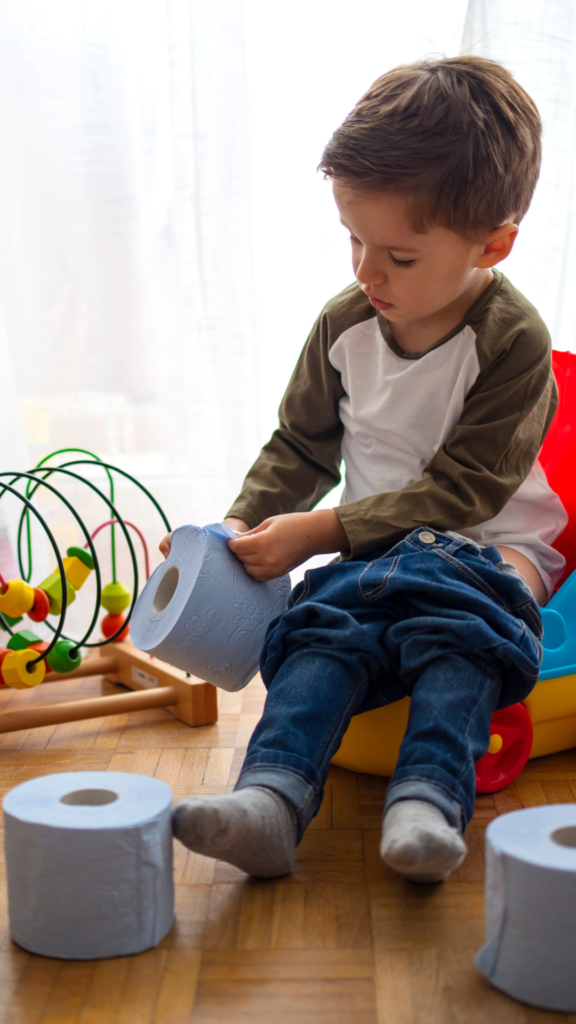
Here are some practical tips to help your toddler poop in the potty.
1. You're going to want to get a sense of their poop routine.
Start logging the times they go poop. Then, of course, that's when you want to sit them on the potty.
You want to shoot for at least five to ten minutes where they're sitting there trying to go poop.
2. Give them books, toys, or even their tablet (if you feel comfortable) because pooping takes longer.
They have to have enough concentration and enough distraction or willpower to sit on the potty long enough to actually poop.
3. Have them try going potty 20 to 30 minutes after mealtime.
This is when most of us need to poop, so see if it works for your toddler by having them sit on the potty after breakfast, lunch, or dinner.
If you haven't already, download my FREE potty training checklist.
I include one about the developmental signs of potty training readiness, as well as another one about some handy things to say to your child during potty training to ensure success.
If you're looking for more in-depth guidance on potty training, check out my book.
Leave your comments, ask questions, or share your journey with potty training below.
You've got this,
Dr. Jazmine
P.S. Looking for help with discipline? Check out my free discipline workshop, How to Get Your Kids to Listen Without Yelling, for a deeper dive into discipline and setting consequences with intention and respect.
Love this? Don't lose it! Click below to save to your Pinterest!
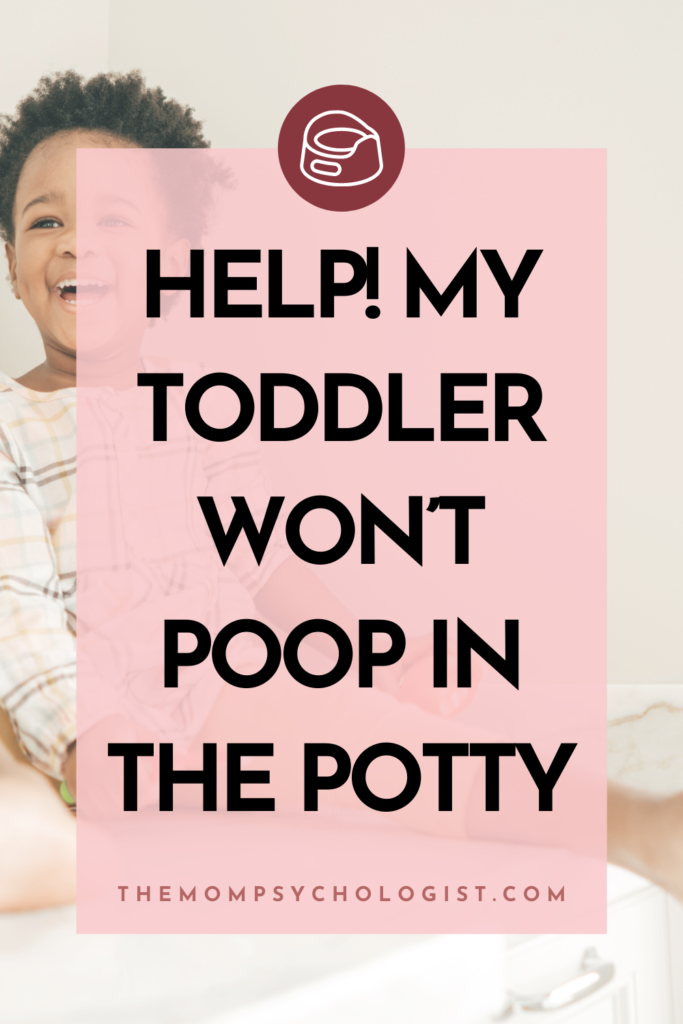
Source: https://themompsychologist.com/2022/02/08/help-my-toddler-wont-poop-in-the-potty/
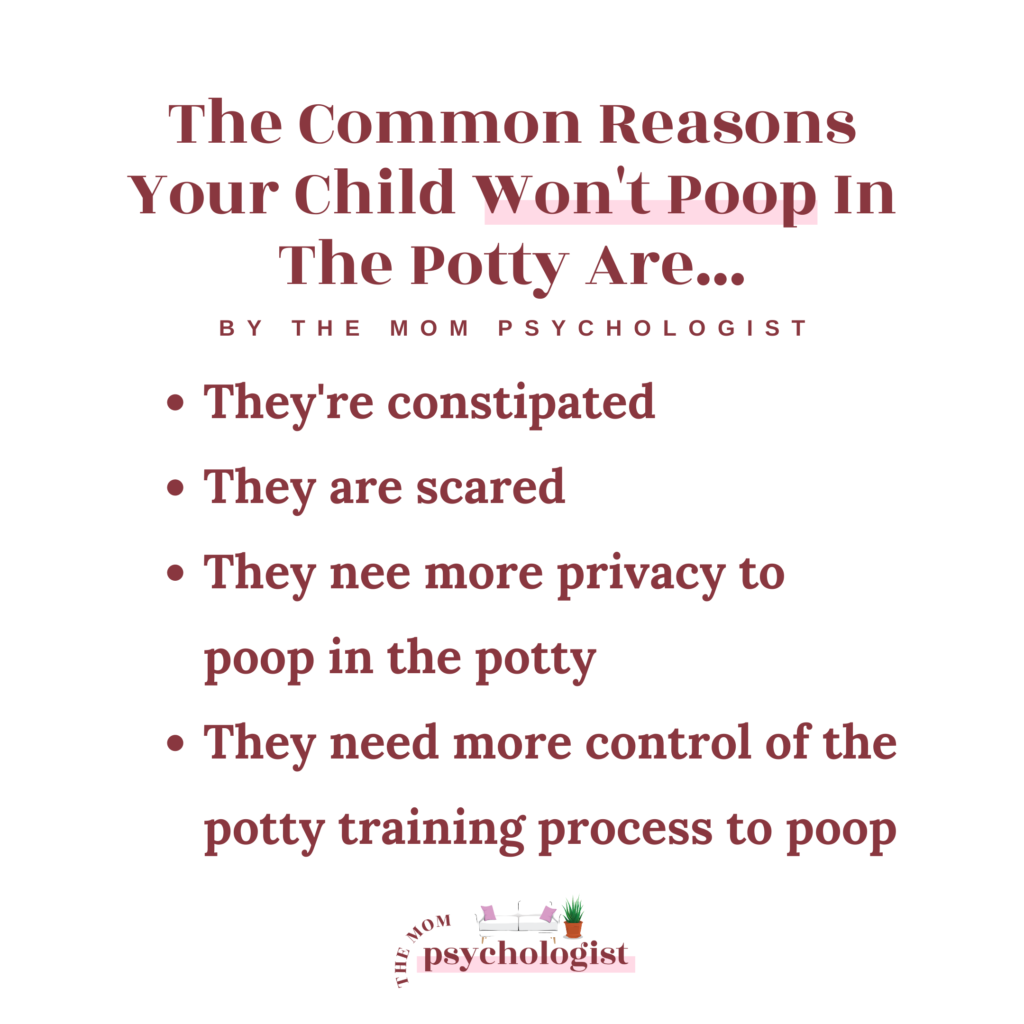
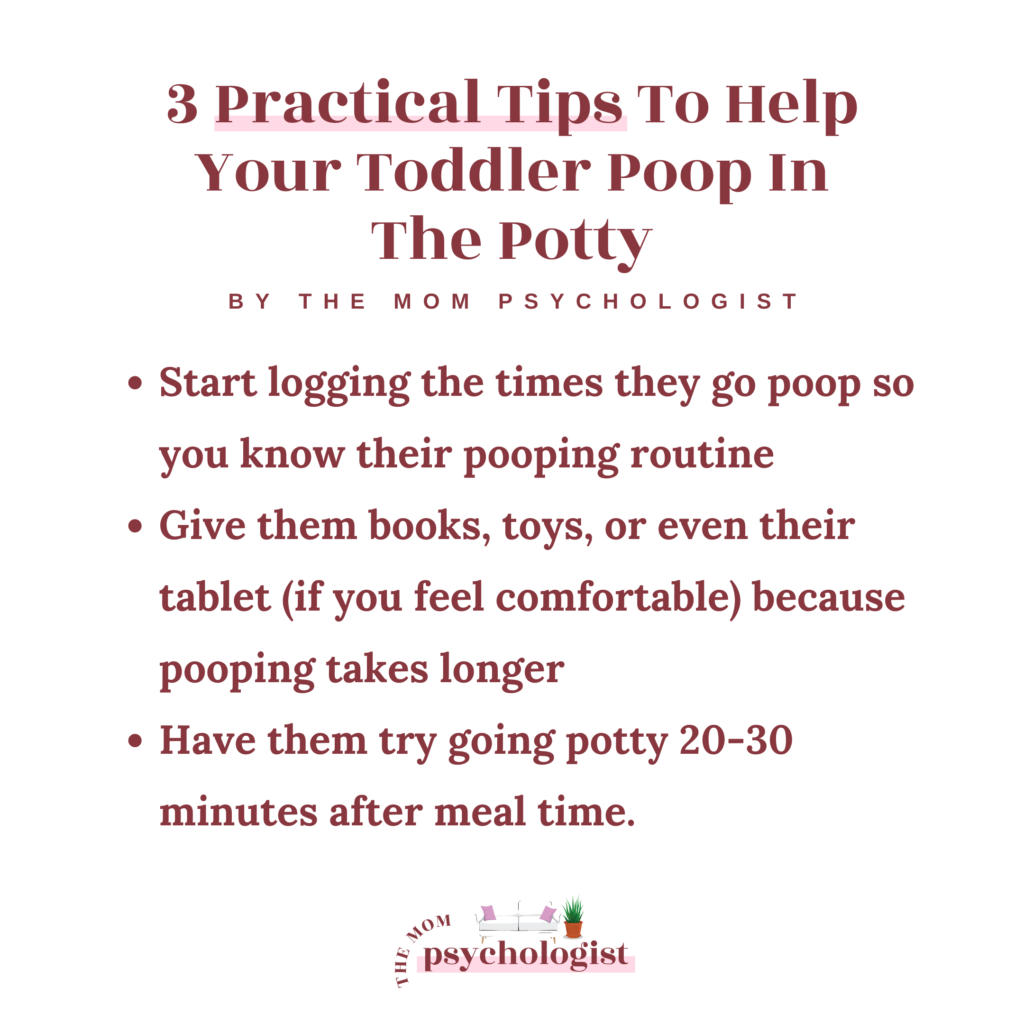
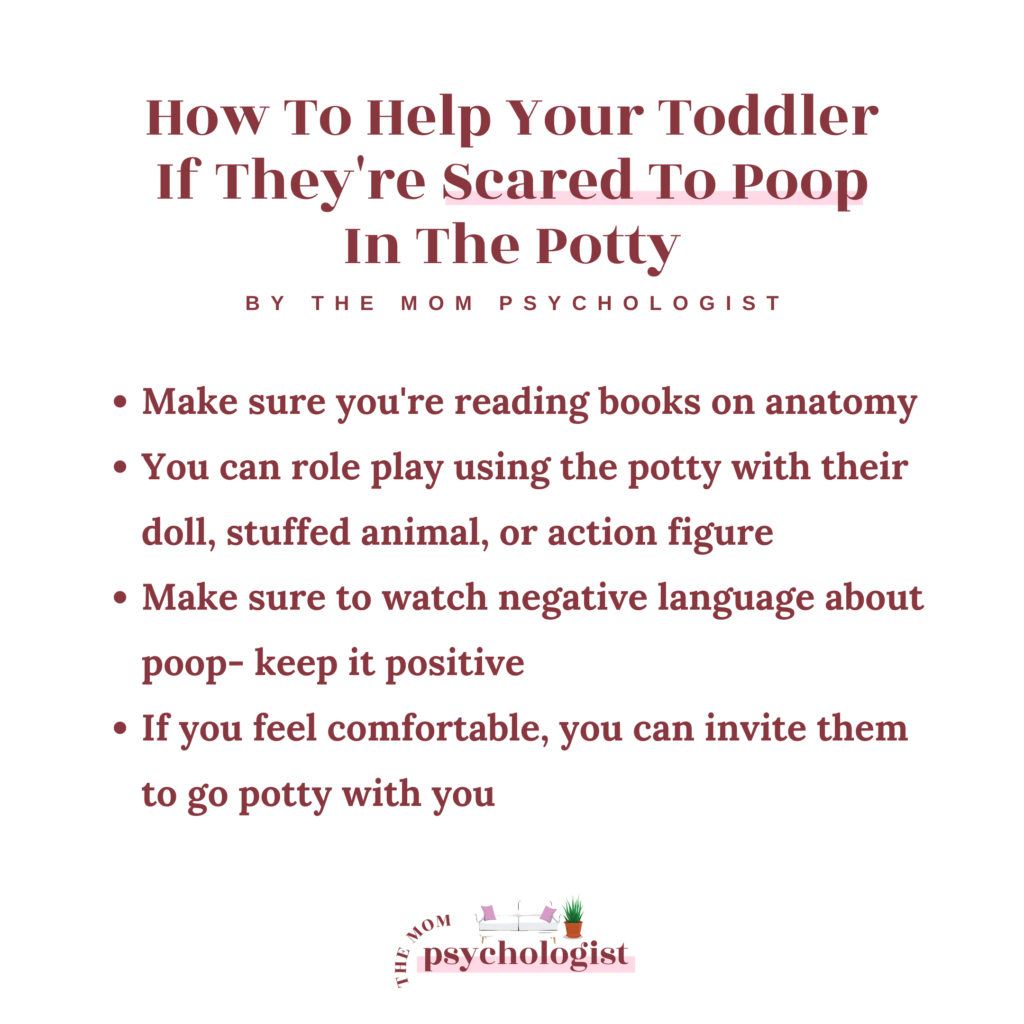
0 Response to "How to Get Toddler to Poop in Potty Again"
Postar um comentário